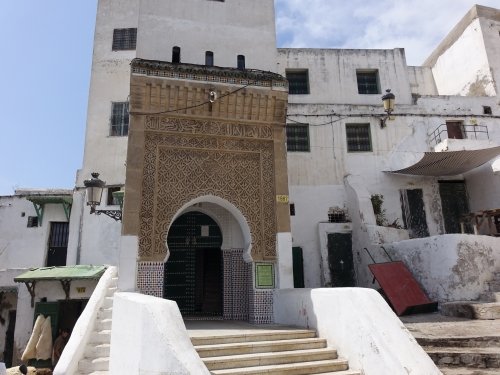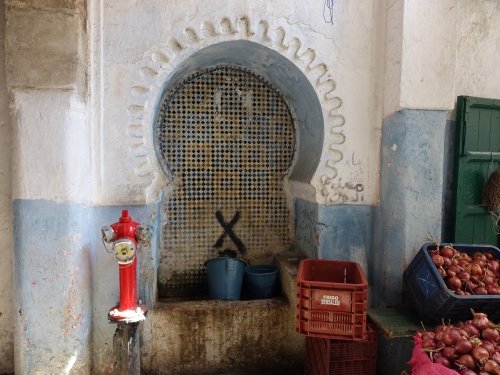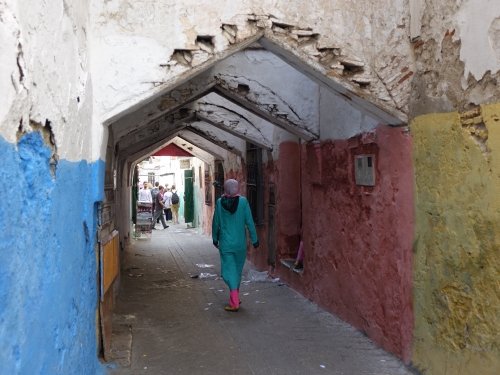Els Slots
Whs #641: Tetouan
The Medina of Tetouan was the second goal of our 2017 WH Travellers Meetup. This Moroccan city can easily be reached on a day trip from the Spanish south coast. We did so by taking an early morning ferry from Algeciras to Ceuta, and then moved on by a pre-arranged minibus to Tetouan for the final 40km. Crossing the border proved to be easy for pedestrians, although the Iranian visa in the passports of some of our group raised a few eyebrows.

Tetouan always has been culturally close to Spain. The city derives its character from the arrival of Spanish-Arab refugees at the end of the 15th century, when the last Jews and Muslims were expelled from Andalusia. Later on it even was the capital of the Spanish protectorate of Morocco (1913-1956). A reminder of that is the early 20th century church at the Moulay el Mehdi square in the modern part of town, where we were dropped off by our driver. A guide took us from there through a lively shopping street, until we arrived at the Hassan II square. This is fully fenced off, as to not get too close to the Royal Palace that is the prominent feature of this square.
The old city starts right behind the palace, and that’s probably were we entered the core zone of the WHS. It isn’t 100% clear which parts of Tetouan are actually included, thanks to probably the worst map ever available on the UNESCO website. But by comparing it to for example this city map , it looks like it's limited to the area within the old city walls. The medina is full of market stalls, with honorary mentions for the displays of fresh fish surrounded by cats and the ample supply of live chickens. Berber people in traditional dress are also frequent sellers and buyers here.

A special part of the old city is also the mellah , the former Jewish quarter. Tetouan had a large Jewish population until the foundation of Israel and immigration to other Western countries. They lived in a separate part of the medina. The synagogue is still there, but with the reportedly only 8 remaining Jews in Tetouan it will no longer be in use. This quarter furthermore stands out due to the enthusiastic use of colour. The white walls dominating the entire city of Tetouan are partly painted in green, yellow, blue and pink.
The final part of the old city that we visited was the kasbah , a fortress within the old city walls having its own gateway. Now it is mostly in use as an additional souk. We experienced little hassle from sellers or touts during our tour of the medina - maybe because we were in the company of an official guide. Or because the tourist police are quite active here: some of the members of our group claimed that we were constantly being followed by an "inconspicuous" plainclothes police officer. Our tour ended at the Blanco Riad , where we had a lovely lunch and were welcomed warmly (they also had arranged the driver and the guide for the day).

The Medina of Tetouan resembles the ones in Marrakesh and Fez, and one sometimes wonders why Morocco has included so many medinas in its proposals. When you visit a couple of them in a row the attraction wears out. But for an isolated day trip Tetouan proved to be worth it. The really big sights and former wealth (which are present in Marrakesh and Fez) are lacking here, but the atmosphere feels more authentic than at its southern counterparts. It’s quite tourist friendly as well: the more important historic buildings do have tiles with a UNESCO sign plus information in Arabic, French and English attached to them. Unfortunately we were not able to get into any of the historic buildings, such as the renovated Medersa Loukach .
More on
Els SlotsComments
No comments yet.
